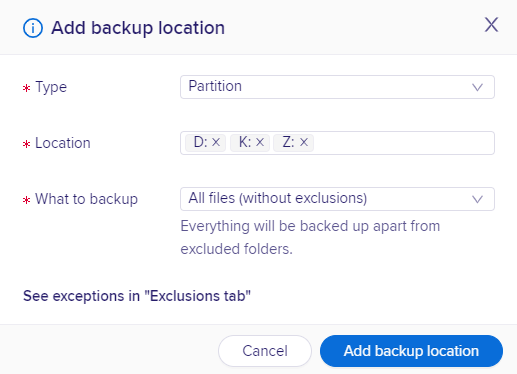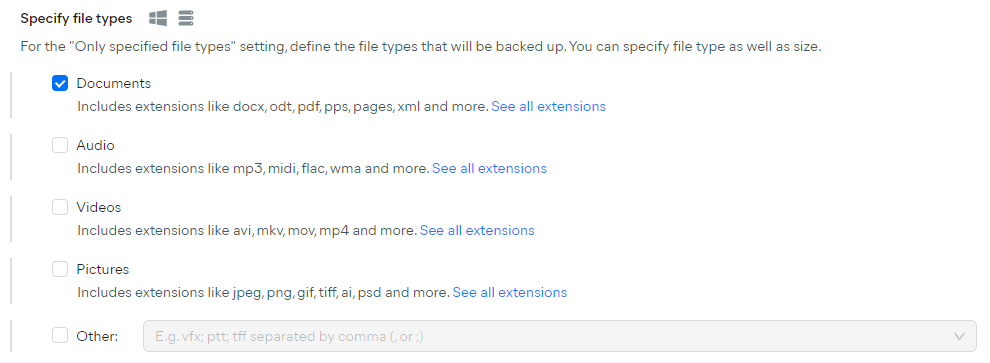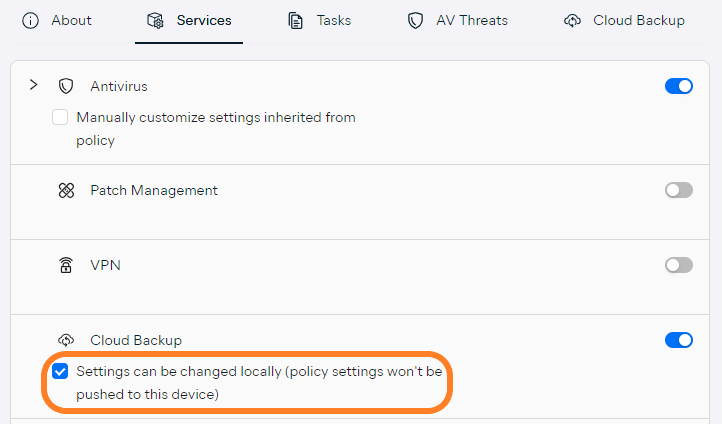PROXIMANOVA-LIGHT.OTF PROXIMANOVA-LIGHTIT.OTF PROXIMANOVA-EXTRABLD.OTF PROXIMANOVA-BOLD.OTFPROXIMANOVA-BLACK.OTF
Get this font in here!
This Article Applies to:
- Avast Business Hub
Via your policy settings, you can configure what data to back up from your devices based on its type, location, and/or size. You can also schedule automatic backups and define the duration of file retention.
To access these settings:
- Open the Policies page
- Click the desired policy to open its Detail drawer
- Click the Settings tab, then Cloud Backup
- Expand the Cloud Backup section

Defining What to Back Up
You can select multiple types of data to back up and specify which files to back up for each type.
The files in %USERPROFILE%\Documents are backed up by default.
- Under What to back up, click + Add backup location

- Select the location type from the following:
- All disk partitions (only specified file types will be backed up)
- Folder
- Partition
- Select the location:
- For folders, enter the path(s) to the folder(s)
- Use
%USERPROFILE%\FolderNameformat for user folders
- Use
- For partitions, select the desired partition(s) from the drop-down menu
- For folders, enter the path(s) to the folder(s)
- Select what to backup from the specified location:
- All files (without exclusions)
- Only specified file types
- Click Add backup location

The defined folders/partitions will then be displayed on the list. If needed, you can edit/delete any listed entry using the pencil/trash bin icon in the Actions column.

Choosing Specific File Types
If you selected Only specified file types for any of the backup locations you added, you will need to define those types under the Specify file types section by ticking the checkboxes next to any of the following options:
- Documents (.docx, .odt, .pdf, .pps, .xml, etc.)
- Audio (.mp3, .midi, .flac, .wma, etc.)
- Videos (.avi, .mkv, .mov, .mp4, etc.)
- Images (.jpeg, .png, .gif, .tiff, .ai, .psd, etc.)
- Other (enter specific extentions to back up)

Under this section, you can also choose to exclude files from backup based on their size. This can help ensure that files that are too small or too large to be useful aren't included in storage.

Specifying Exclusions
Under the Exceptions section, you can click the provided link to access the settings for Cloud Backup exclusions.

For detailed instructions on excluding files, folders, or entire partitions from backup, see Configuring Cloud Backup Exclusions.
Scheduling Backups
A backup schedule helps ensure you always have access to the most recent versions of files on your devices.
The automatic backups can be set up to occur:
- Hourly
- Daily, at a specified time
- Weekly, at a specified time of a selected day of the week
- Monthly at a specified time of a selected day of the month
- We recommend choosing a day of the month that occurs every month of the year. If backups are scheduled to occur on the 31st day of the month, for instance, they will only occur every other month.

If a device cannot be reached during the scheduled time, the backup will occur when the device is back online.
Configuring File Retention
Backed up files store versions or changes made to a file. These changes are stored depending on how recently the changes were made. For example, seven versions are kept from one week ago, four from a month ago, and one from a year ago. The versions are automatically deleted when no changes are made to a file between backups.
By default, all copies of your files are kept in the cloud forever. You can use the following options under the Retention section to set up automatic file deletion after a specified number of days:
- If the files were deleted locally, delete from the cloud — This will remove files from the cloud that have been removed manually from the end device.
- Delete files from the cloud if they didn't change locally — This will remove files that aren't commonly accessed or altered on the end device. Files will also be excluded from backup based on how long ago they were modified.
- If an existing file in your backup is older than the selected value, it will be backed up again unless you remove it from the backup set
- If a new file is added to your backup set, and the file is older than the selected value, it will not be backed up at all

This can help prevent any unnecessary files from being kept for too long (and thus take up the backup space available).
Overriding Policy Settings
Via the Services tab of a device, you can enable policy overrides for Cloud Backup by ticking the Settings can be changed locally checkbox.

When this is selected, the policy configuration will not be pushed to the device, and locally set preferences will apply instead.
To learn more about policy overrides, see